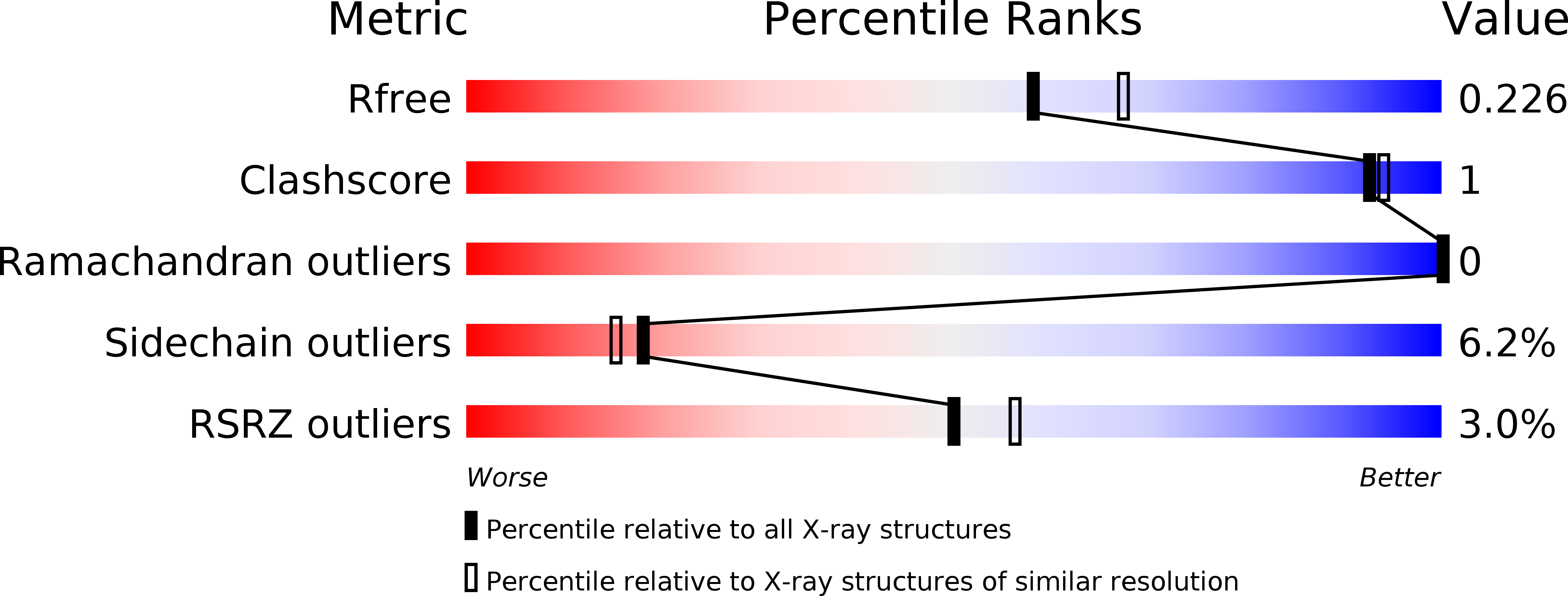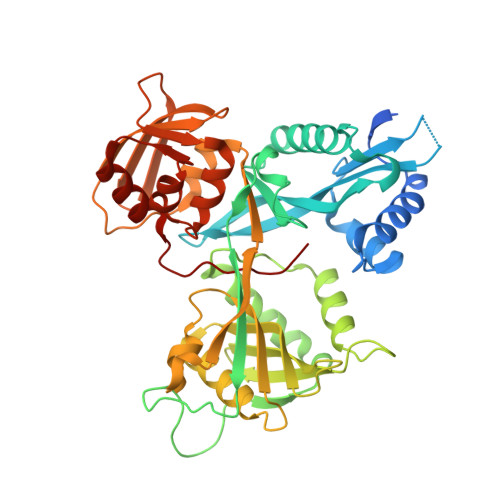Sulfonamide-Based Inhibitors of Aminoglycoside Acetyltransferase Eis Abolish Resistance to Kanamycin in Mycobacterium tuberculosis.
Garzan, A., Willby, M.J., Green, K.D., Gajadeera, C.S., Hou, C., Tsodikov, O.V., Posey, J.E., Garneau-Tsodikova, S.(2016) J Med Chem 59: 10619-10628
- PubMed: 27933949
- DOI: https://doi.org/10.1021/acs.jmedchem.6b01161
- Primary Citation of Related Structures:
5IV0 - PubMed Abstract:
A two-drug combination therapy where one drug targets an offending cell and the other targets a resistance mechanism to the first drug is a time-tested, yet underexploited approach to combat or prevent drug resistance. By high-throughput screening, we identified a sulfonamide scaffold that served as a pharmacophore to generate inhibitors of Mycobacterium tuberculosis acetyltransferase Eis, whose upregulation causes resistance to the aminoglycoside (AG) antibiotic kanamycin A (KAN) in Mycobacterium tuberculosis. Rational systematic derivatization of this scaffold to maximize Eis inhibition and abolish the Eis-mediated KAN resistance of M. tuberculosis yielded several highly potent agents. A crystal structure of Eis in complex with one of the most potent inhibitors revealed that the inhibitor bound Eis in the AG-binding pocket held by a conformationally malleable region of Eis (residues 28-37) bearing key hydrophobic residues. These Eis inhibitors are promising leads for preclinical development of innovative AG combination therapies against resistant TB.
Organizational Affiliation:
University of Kentucky , Department of Pharmaceutical Sciences, College of Pharmacy, 789 South Limestone St., Lexington, Kentucky 40536-0596, United States.





















